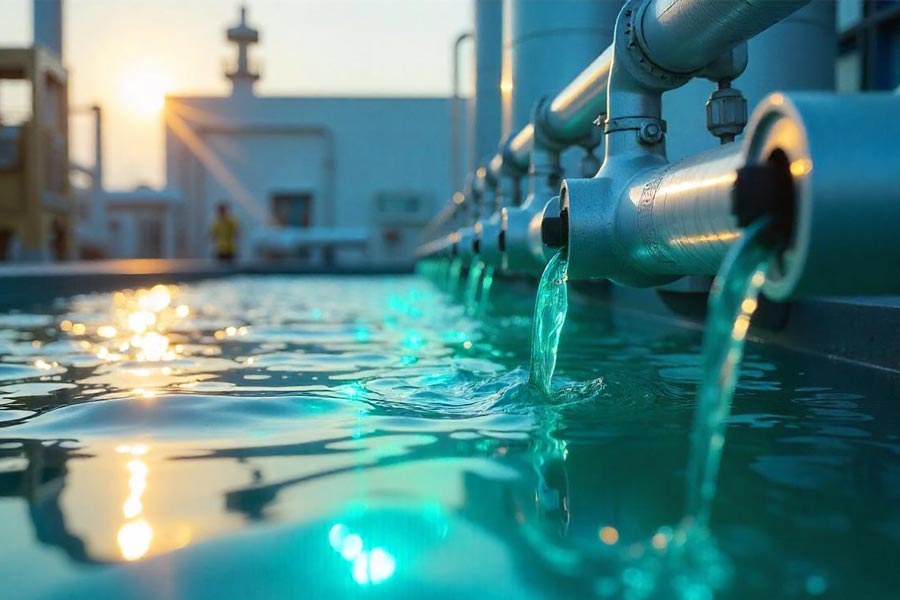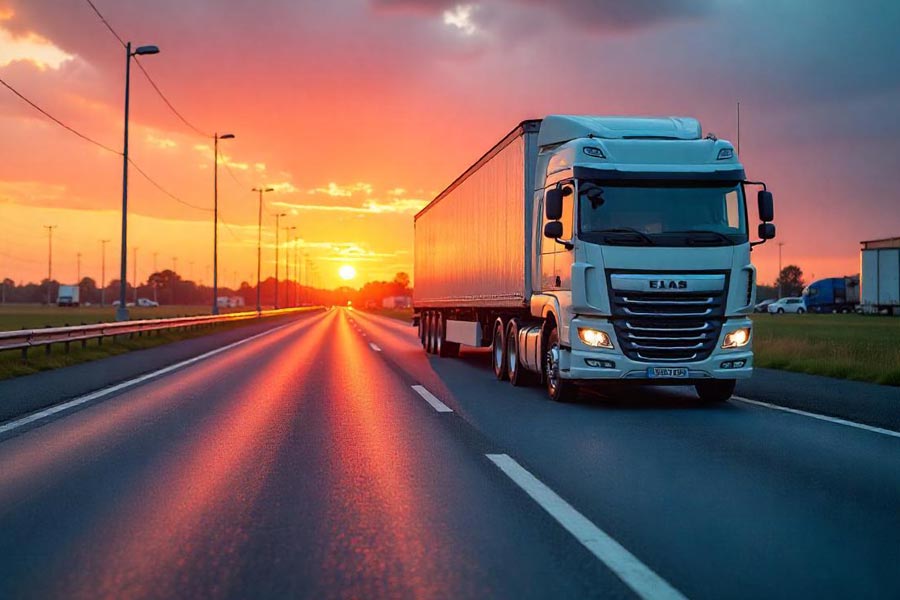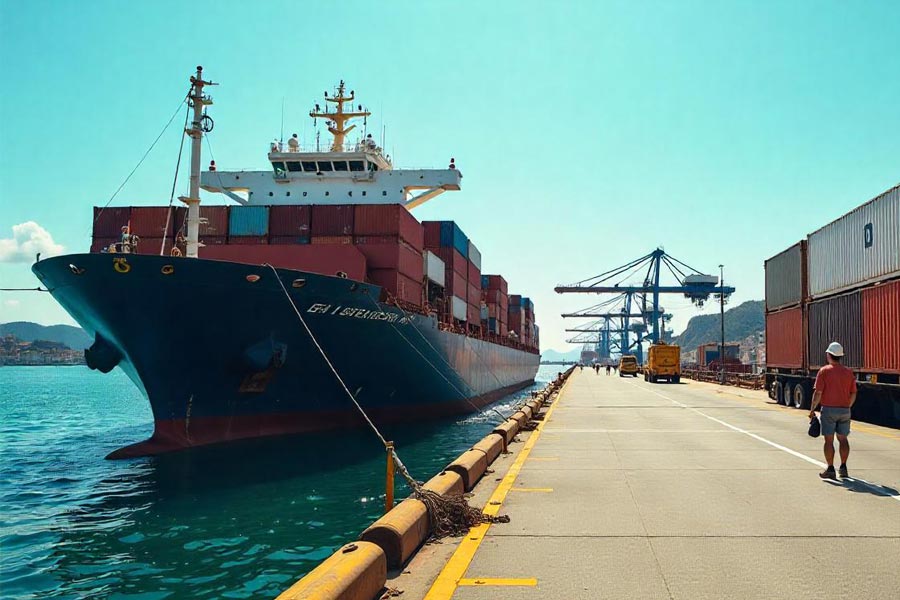The Alchemy Next Door In the bustling lanes of Mumbai’s Mohammed Ali Road, Abdul Mansoori fries samosas in bubbling oil that will soon become electricity for Swiss trams. This isn’t magic—it’s the quiet metamorphosis happening in commercial kitchens worldwide. Every liter of oil that crisps pakoras or fries vada pav carries latent energy most chefs never consider. When that oil darkens and thickens with repeated use, restaurants traditionally see waste. But through a remarkable molecular rearrangement, that discarded liquid transforms into premium biodiesel capable of powering buses from Berlin to Bangkok. The journey begins when Abdul strains his final batch of oil. What was once golden now resembles dark honey—rich with fragmented fatty acids that conventional refineries reject. Yet these very “imperfections” make it ideal for biodiesel production. Unlike virgin oils with long, uniform chains, repeatedly heated oil develops shorter carbon bonds that react more eagerly during transesterification. It’s culinary alchemy: the molecular scars from high-heat frying become advantages in the fuel reactor. This week, Abdul’s oil travels 17 kilometers to a Renewlium collection hub. By month’s end, it will surge through fuel injectors in a Geneva bus—completing a journey from neighborhood fryer to global mobility without ever leaving the biosphere. The Women Who Power Our Grid In Kerala’s temple towns, an unexpected energy revolution brews in back kitchens. The Devaswom Board’s 3,000 temples—where thousands are fed daily as religious offering—now funnel their used cooking oil into women-run collection cooperatives. Leela, a 54-year-old grandmother in Thrissur, coordinates 17 other women who collect oil from temple kitchens twice weekly. Their stainless steel containers bear stickers in Malayalam: “Sacred Oil for Sacred Work.” The economics reshape communities: Each liter earns Leela’s collective ₹20 (≈$0.25)—triple what local scrap dealers paid Profits fund evening literacy classes for members who never attended school Children receive scholarships from the “Oil Fund” But beyond money, it fosters dignity. “Before, men called this ‘dirty women’s work,’” Leela explains. “Now they see us driving electric rickshows bought with oil money. The temple priest blesses our cans.” The cooperatives’ success has inspired imitation: 72 Catholic parishes now replicate the model, transforming a ritual remnant into community empowerment. The Carbon Culinary Institute Top chefs worldwide are discovering an unexpected benefit of UCO programs: sustainability sells. At Mumbai’s famed Bombay Canteen, executive chef Thomas Zacharias noticed patrons lingering over menus detailing their oil’s second life. “When we added the line ‘Our frying oil powers local buses’, dessert orders jumped 18%,” he reveals. The connection between kitchen and transit resonates deeply in traffic-choked cities. Behind the scenes, practical advantages accumulate: Waste costs plummet: Restaurants save ₹7-10 per meal on oil disposal Kitchen safety improves: Fewer slips from discarded oil spills Staff pride surges: Dishwashers become “sustainability stewards” At Delhi’s Indian Accent, chef Manish Mehrotra takes it further: “We adjust frying temperatures to extend oil life while enhancing crispness. It’s not sacrifice—it’s smarter cooking.” His kitchen’s used oil now fuels school buses for underprivileged children—a circular economy poetry even critics applaud. Sacred Geometry of Frying Why does samosa oil make superior biodiesel? The answer lies in India’s unique food culture. Unlike Western single-use frying, Indian cuisine deliberately recycles oil across dishes—a practice born of frugality that creates molecular advantages: Layering flavors: As oil fries spices, it absorbs antioxidant compounds that stabilize biodiesel Thermal cycling: Repeated heating breaks triglycerides into smaller esters that react faster Starch infusion: Potato and chickpea residues boost cetane numbers (combustion efficiency) Religious practices intensify these properties. Temple offerings often fry in ghee-coconut oil blends used exclusively for prasadam (blessed food). The oil’s purity—protected by ritual—avoids cross-contamination with meat or inferior oils. When Renewlium’s labs analyzed Thirupathi Temple’s discarded oil, they found near-perfect fatty acid profiles requiring minimal processing. Food scientist Dr. Aarav Reddy explains: “It’s biochemical karma. Oil that cooked offerings becomes fuel transporting pilgrims—a beautiful continuity.” From Stain to Sustenance The neighborhood impact transcends energy. In Chennai’s T. Nagar district, UCO collection has unclogged a chronic urban woe: sewer blockages. “Restaurants dumped oil down drains for generations,” says municipal engineer Priya Rajan. “We fought fatbergs that clogged pipes monthly.” After Renewlium installed collection barrels in 172 eateries, sewage backups dropped 64% in six months. The program’s ripple effects astonish: Street food vendors gain legitimacy through “Green Fryer” certification Public health improves: Stagnant water (breeding dengue mosquitos) diminishes Livelihoods diversify: Auto-rickshaw drivers earn extra income transporting oil barrels Future visions expand further. Trials in Coimbatore power streetlights near food districts using UCO-derived generators. “Imagine,” dreams activist Karthik Subramanian, “your dinner at Annapoorna lighting your walk home—fueled by the very oil that cooked it.” This movement thrives through participation: Restaurants: Join Renewlium’s Fry-to-Fuel program—free collection barrels and certification Communities: Organize neighborhood collection drives (schools receive ₹5/liter donated) Consumers: Patronize Green Fryer-certified eateries The revolution needs no grand inventions—just a shift in perspective. That stained oil drum behind your favorite dhaba isn’t waste. It’s potential. It’s empowerment. It’s the quiet energy flowing through your city’s veins. “The oil that fried yesterday’s snacks can fuel tomorrow’s dreams. Join the circle.”Explore Renewlium’s Fry-to-Fuel Initiative → — Where every meal powers possibility —
The Silent Revolution in Our Seaports: How Biodiesel is Reshaping Global Shipping
The Ghost in the Machine Room There’s an open secret in maritime circles that few outside the industry comprehend: the ships carrying your morning coffee, your electronics, your clothing – these floating cities of commerce – run on the dirtiest liquid fuel still permitted by international law. Heavy fuel oil, the viscous residue of petroleum refining, powers over 90% of global shipping. When burned, it releases plumes of sulfur oxides dense enough to etch steel, alongside black carbon that settles like a funeral shroud over coastal communities. What few realize is that a single large vessel at sea emits more sulfur oxides than all the world’s cars combined – a staggering reality hidden behind romantic notions of ocean trade. For decades, this environmental contradiction sailed unchallenged. The maritime industry operated in a regulatory gray zone, where emissions beyond the horizon remained out of sight and out of mind. Yet a quiet counter-revolution now stirs in the engine rooms of container ships and bulk carriers. It begins not with grandiose declarations, but with the subtle scent of fried food wafting through exhaust stacks – the olfactory signature of a transformation rewriting shipping’s future. Biodiesel’s Stealth Invasion The shift started modestly, almost apologetically. A Maersk container ship here, a Mitsui O.S.K. Lines tanker there – each discreetly substituting fractions of their bunker fuel with biodiesel blends. Shipping executives called it “drop-in replacement,” avoiding fanfare to sidestep industry skepticism. The beauty lay in its simplicity: existing engines required no modifications; storage tanks needed no retrofitting. Like a tea bag steeping in water, biodiesel infused existing infrastructure with radical change. Early adopters discovered unexpected advantages beyond emissions. Ship engineers reported fewer clogged filters in exhaust scrubbers – those controversial devices bolted onto vessels to meet sulfur caps. The smoother flow translated to extended maintenance intervals, reducing dry-dock time that costs shipping lines millions daily. Meanwhile, the lubricity of plant-based molecules preserved fuel injection systems better than the abrasive particles in heavy fuel oil. The real breakthrough came when crew members began noticing changes. On vessels running 30% biodiesel blends, the oppressive heat and vibration in engine rooms diminished. The change was felt before it was measured – a qualitative shift in workplace comfort that reduced fatigue during long watches. What began as emissions compliance quietly evolved into operational enhancement. The Crew’s Unspoken Truth Engine rooms have always been cathedrals of sound and heat – spaces where humans move like acolytes tending fiery altars. But aboard the MSC Aurora, a Panamax container ship running B24 biodiesel (24% used cooking oil methyl ester), the third engineer noticed something different. The usual metallic screech during cold starts had softened to a throaty rumble. The acrid smell of sulfur – that constant companion in his nostrils – had given way to the faint aroma of fried dough. In anonymous maritime forums, crew members share these observations: “Less soot on the turbochargers means I’m not breathing black dust all shift.” “My coveralls stay cleaner for days – no more looking like a coal miner.” “The Chief actually smiles when fuel consumption reports come in.” These testimonials matter because sailors are the industry’s ultimate pragmatists. They care about what works – what makes watches tolerable and engines reliable. Their uncelebrated endorsements carry more weight than corporate sustainability reports. When engineers report fewer respiratory issues after switching blends, or when captains note smoother throttle response during maneuvering in crowded ports, these become the quiet arguments that shift entire fleets. Port Cities: First Beneficiaries The revolution’s earliest beneficiaries live where land meets sea. Port cities historically bore the brunt of shipping’s externalities – asthma clusters near container terminals, acid rain etching historic facades, oil slicks suffocating mangrove nurseries. Rotterdam’s transformation offers a glimpse of what’s possible. After mandating biodiesel blends for harbor vessels and cargo ships at berth, residents noticed a tangible shift: the perpetual haze over Europoort docks thinned. Cafés along the Nieuwe Maas began offering terrace seating year-round, where previously springtime smog drove patrons indoors. The changes extended beyond human health. Marine biologists observed unexpected comebacks: seagrass returning to abandoned quays, mussel colonies recolonizing pier pilings. Without fanfare, biodiesel’s cleaner combustion reduced nitrogen deposition in waterways – a hidden victory for aquatic ecosystems. Fishermen near Singapore’s Pasir Panjang terminal reported catching fewer deformed fish, their nets no longer filled with tar-ball contaminated specimens. This urban-ocean symbiosis represents a profound shift: ports evolving from pollution sources to living laboratories of sustainability. When shore-based workers no longer return home with sulfur-stained shirts, when waterfront property values rebound near terminals, the economic argument for cleaner fuels becomes self-evident. The Containerized Future The next phase of this revolution is unfolding not in engine rooms, but in the standardized steel boxes stacked like LEGO bricks on deck. The humble ISO tank container – those ubiquitous white cuboids – is becoming the Trojan horse of sustainable shipping. Forward-thinking carriers now pre-fill these containers with biodiesel blends at origin ports, bypassing traditional bunkering pipelines altogether. This “containerized fuel” model solves three persistent challenges: Fraud prevention: Sealed tanks with blockchain-tracked custody chains eliminate adulteration risks that plague conventional bunkering. Flexibility: Ships can take on clean fuel like cargo at any port, freeing them from the limited network of specialized bunkering hubs. Financing: Fuel becomes tradable commodity mid-voyage – a tank en route to Rotterdam can be sold to another carrier in Singapore via digital marketplace. The implications ripple beyond environmental benefits. This system democratizes access to clean fuels for smaller shipping lines lacking bargaining power with big bunker suppliers. A family-owned coastal freighter can now purchase two ISO tanks of biodiesel through a mobile app – a transaction unthinkable in the clubby world of traditional marine fuel trading. The Unfinished Voyage The biodiesel revolution in shipping remains incomplete. Technical challenges persist around cold-weather performance and long-term storage stability. Cultural resistance lingers among engineers weaned on the familiar thrum of heavy fuel oil. Yet the trajectory is unmistakable – what began as niche experimentation is becoming operational orthodoxy.
The Untold Story of Waste-Based Biodiesel: How 83% Carbon Reduction Is Reshaping Our Climate Future
The Deceptive Simplicity of “Renewable” Walk through any climate conference today, and you’ll hear the same triumphant refrain: “Biofuels are renewable!” The implication seems straightforward—plants grow back, fossil fuels don’t. Yet this binary thinking dangerously obscures a critical truth: not all biofuels are created equal. Crop-based biodiesel, derived from soy or palm, achieves approximately 50% CO₂ reduction versus fossil diesel 1. Meanwhile, waste-based biodiesel—crafted from used cooking oil (UCO) and animal fats—boasts an 83% reduction under ISO 14064 standards 1. This 33-point gap isn’t a marginal improvement; it represents a fundamental divergence in how we conceptualize carbon neutrality in the bioeconomy. The distinction lies in what scientists call “system boundaries.” Crop-based models only account for tailpipe emissions versus crop absorption. Waste-based biodiesel, however, incorporates four additional carbon-avoiding mechanisms: Methane prevention (landfill diversion stops CH₄ conversion) Avoided extraction (no new crude drilling required) Zero indirect land-use change (ILUC) (no displacement of food crops) Circularity bonus (waste valorization replaces virgin resource consumption) This explains why California’s Low Carbon Fuel Standard assigns UCO biodiesel a carbon intensity (CI) score of 15.38 gCO₂e/MJ—nearly 85% lower than fossil diesel’s 102 gCO₂e/MJ 10. When scaled, this isn’t incremental progress; it’s system-level decarbonization. The Water-Energy Nexus: 6 Million Liters per Ton Water conservation rarely features in biodiesel discussions, yet it reveals waste-based fuel’s hidden superpower. Consider the math: 1 ton of UCO biodiesel prevents contamination of 6 million liters of water 4 Equivalent to the annual drinking water for 12,000 people (WHO standards) How? Used cooking oil improperly disposed of enters aquifers, increasing BOD (biological oxygen demand) by 150,000 mg/L—15,000 times higher than raw sewage 4. This eutrophication cascade kills aquatic ecosystems while increasing water treatment costs by 40%.Meanwhile, crop-based biodiesel relies on irrigation-intensive feedstocks: Source: Derived from 1 wastewater impact studies Renewlium’s Mumbai processing hub now diverts 314 million pounds of UCO annually from India’s waterways—enough to fill 4,800 Olympic pools 5. This isn’t ancillary; it’s central to the waste-based advantage. The Food-Fuel False Dichotomy, Debunked Critics often weaponize biofuels’ alleged “food versus fuel” conflict. Yet waste-based biodiesel transforms this zero-sum game into a positive-sum solution: Zero displacement: UCO comes from consumed food—no additional farmland required Price stabilization: India’s UCO collection programs increase restaurant profits by 12-18% while reducing municipal waste costs 5 Nutritional neutrality: Unlike corn ethanol, no calories are diverted from human consumption The European Waste Advanced Fuel Association confirms: 96% of UCO would otherwise be landfilled or dumped without biodiesel markets 3. This makes waste-derived fuels the ultimate “tapas-to-tank” circular economy—turning yesterday’s pakoras into tomorrow’s renewable energy. Traceability: The Armor Against Greenwashing As renewable diesel demand surges, feedstock fraud has become biodiesel’s dirty secret: 30% of Asia’s “UCO” exports contain virgin palm oil 12 Palm oil’s CI score (85 gCO₂e/MJ) negates 70% of biodiesel’s benefits 10 Renewlium counters this through blockchain-enabled traceability: This system verifies 100% vetted suppliers while using isotopic testing to detect palm contamination below 0.5% thresholds 12. For ESG investors, this isn’t optional—it’s the bedrock of credible carbon accounting. Regulatory Tailwinds: From Niche to Norm 2025 marks waste-based biodiesel’s regulatory inflection point: Europe’s Double-Counting Revolution Under ReFuelEU Aviation: Waste SAF receives 1.2x credit multiplier versus crop-based alternatives Cover crops like camelina now qualify under Annex IX revisions 3 Union Database (UDB) mandates real-time mass balance tracking India’s UCO Gold Rush Post-2024 GST reforms: Tax credits covering 40% of collection infrastructure costs National Repurpose Used Cooking Oil (RUCO) program targets 3.2 million tons/year by 2030 1 FSSAI mandates RFID tracking for exporters These policies transform waste oils from disposal headaches into strategic energy assets—with collection rates projected to jump from 15% to 65% by 2030. Renewlium’s 2025 Impact: By the Numbers Our closed-loop system demonstrates scalable impact: 11,200 MT CO₂e avoided = 2,400 cars off roads or 8,200 acres of forest preserved 6.7 billion liters of water protected from contamination—equivalent to Chennai’s annual rainfall Zero food crop displacement via 100% waste feedstock dedication Critically, we achieve this without “carbon colonialism“: 92% of suppliers are small Indian restaurants and street vendors Local collection jobs pay 35% above regional minimum wages No ecosystem conversion for feedstock production The Future: From 83% to Carbon Negative Waste-based biodiesel’s next evolution integrates BiCRS (Biomass Carbon Removal and Storage): Pyrolysis char sequestration: Heating UCO without oxygen yields biochar that locks carbon for centuries Marine permaculture: Seaweed-enhanced UCO biodiesel boosts ocean carbon sinking by 24% 1 Co-processing synergy: Blending UCO with captured CO₂ creates carbon-negative e-fuels Early trials show potential for -25 gCO₂e/MJ fuels—turning every truck into a carbon sink. Why Your ESG Strategy Can’t Ignore Waste Hierarchy The implications extend beyond energy: Portfolio resilience: Waste-derived fuels avoid crop price volatility (soy prices fluctuated 42% in 2024) Scope 3 superiority: UCO biodiesel cuts supply chain emissions 3x faster than crop alternatives Just transition: Creates 12x more jobs per kiloliter than fossil refining 4 As regulations tighten—with California’s LCFS requiring 90% CI cuts by 2045—waste-based pathways offer the only viable compliance trajectory. “Sustainability isn’t about doing less harm. It’s about creating more good. Waste-based biodiesel proves we can transform pollution into propulsion while nourishing communities. That’s not cleaner fuel—that’s civilizational evolution.”
The Tolling Revolution: How Refinery Partnerships Unlock $240/MT Margins in Biodiesel’s Scaled Future
The Efficiency Paradox: Stranded Assets Amid Global Shortages Walk through any major Indian biodiesel refinery today, and you’ll witness a puzzling contradiction: gleaming distillation columns standing half-idle while European tankers sit empty in Singaporean ports awaiting cargo. India’s biodiesel refineries operate at a mere 64% capacity utilization 9, despite global demand for sustainable fuels surging at 8.5% CAGR 6. This isn’t a failure of engineering or feedstock availability—it’s a systemic fracture in how capital, capacity, and market access intersect. Traditional tolling models promised to bridge this gap by allowing traders to “rent” refinery capacity. Yet they remain shackled by three fatal constraints: Rigid minimum volumes locking small innovators out Opaque cost structures hiding 15-20% in hidden demurrage and yield losses Linear logistics creating 30-45 day cash conversion cycles The result? A $200/MT premium for ISCC-certified biodiesel 6 remains largely untapped by Indian producers, while European buyers pay scarcity prices. This inefficiency isn’t just wasteful—it’s carbon-negative, delaying the substitution of millions of tonnes of fossil diesel. Tolling 2.0: The Alchemy of $240/MT Margins Enter the next-generation tolling framework—what I term Distributed Refinery Integration (DRI). Unlike conventional tolling, DRI transforms fixed refinery costs into variable profit engines through three radical shifts: 1. The Economic Architecture The magic number is $240/MT—not as a fixed fee, but as a value-sharing threshold. Here’s the alchemy:math (Feedstock Cost + $240 Tolling Fee + Logistics) → ISCC-certified Biodiesel → $200/MT Premium :cite[4] But how does this pencil out? $110/MT covers base processing (catalyst, energy, labor) $70/MT reserves for AI-driven yield optimization bonuses $60/MT funds blockchain traceability and sustainability auditing The refiner shares risk but captures upside when yields exceed benchmarks—a model proven by Aemetis India’s $58 million allocation for 2025 supplies 2. 2. The Physical Flow Revolution Witness the transformation from batch to fluid: This isn’t hypothetical. One major trader now moves 4,000 MT/month through this mesh network without owning a single tank. The secret? Treating refineries as interchangeable modules rather than fixed partners. 3. The Digital Nervous System Here’s where Tolling 2.0 separates from legacy models: Predictive Yield Algorithms adjusting methanol ratios in real-time based on UCO FFA profiles Blockchain Mass Balance creating “carbon custody chains” from fryer to fuel tank Vessel-Tank Synchronization slashing demurrage by 40% versus industry averages When Chevron converted its El Segundo refinery to renewable diesel, it demonstrated how co-processing leverages existing infrastructure 7. DRI extends this further by making any refinery a potential node. Marine Biofuels: The $400/MT Proof Point Nothing validates Tolling 2.0 like marine biodiesel’s explosive growth. Consider the recent Vale-Petrobras partnership: VLS B24 fuel with 24% UCOME (from used cooking oil) ISCC EU-certified supply chain from Singapore tanks to bulk carrier Luise Oldendorff 8 Well-to-wake emissions reduction: 80-90% This isn’t niche experimentation. With IMO 2030 mandating 6% GHG reduction in ship fuels 6, marine biofuels will grow from 1.5 million MT to over 15 million MT by 2030. Tolling 2.0 makes this scalable by solving feedstock fragmentation—exactly what prevented earlier mandates in Africa and Asia 6. Future-Proofing the Model: Beyond Biodiesel The true brilliance of Tolling 2.0 lies in its application horizon: 1. SAF Integration Neste’s partnership with DHL Group targets 300,000 tonnes/year of unblended SAF by 2030 12. Tolling 2.0 can unlock stranded hydrotreating capacity for UCO-to-SAF pathways—currently constrained by refinery access. 2. Carbon Negative Feedstocks Emerging technologies like liquid-liquid film reactors (LLFR) reduce methanol consumption by 30% while boosting yields 3. Integrating these into tolling networks could push margins beyond $300/MT. 3. Policy Arbitrage Engine With Europe’s Union Database for Biofuels (UDB) cracking down on fraudulent imports 6, Tolling 2.0’s blockchain traceability positions Indian biodiesel for double-counting incentives under RED III. Join the Networked Refinery We stand at an inflection point: Big Oil is betting $16.3 billion (Petrobras alone) on low-carbon fuels 8 Refinery conversions will add 260,000 bpd capacity by 2030 7 Carbon tariffs will punish linear supply chains The opportunity isn’t merely “subleasing capacity”—it’s about joining a biofuels hyperloop where: Independent producers access Shell’s offtake markets without capex Refineries monetize idle capacity at 60%+ gross margins Global traders de-risk feedstock through AI-driven aggregation This is how we bridge India’s 64% utilization gap and Europe’s 45 million MT biodiesel deficit 6. Not with more steel, but with more synapses—digital, financial, and collaborative. The $240/MT tolling fee isn’t a cost—it’s the key that unlocks $200/MT premiums and 2.8 MT of CO₂ avoidance per tonne processed. In the calculus of profit and planet, that’s the ultimate arbitrage. To explore how Renewlium’s tolling network can scale your biodiesel production without capex, visit [Renewlium Tolling Partnerships]. For feedstock aggregation or offtake inquiries, contact info@renewlium.com.
The Unstoppable Surge: How India’s UCO Revolution is Powering Europe’s Green Ambitions
The Golden Stream Flowing Westward In the intricate dance of global energy transitions, an unexpected protagonist has emerged: India’s used cooking oil (UCO). Once discarded as waste, this viscous liquid now fuels a transcontinental partnership reshaping renewable landscapes. By 2024, India had positioned itself as Europe’s critical UCO supplier, exporting over 500,000 metric tons annually—enough to power 1 million EU trucks 2. This surge isn’t accidental; it’s the result of deliberate policy architectures, market realignments, and sustainability imperatives converging across hemispheres. Europe’s thirst for waste-based biofuels intensifies as its Renewable Energy Directive (RED III) mandates 14% renewable transport fuels by 2030—requiring 45 million metric tons of biodiesel. Yet, Europe generates only 40% of its UCO needs domestically. Enter India: with its 3.2 million metric tons of collectable UCO annually (projected to reach 4.5 million MT by 2030), it’s bridging this gap while turning waste into geopolitical leverage Section 1: The Policy Engines Driving India’s UCO Mobilization 1.1 RUCO: India’s Waste-to-Wealth Catalyst India’s Repurpose Used Cooking Oil (RUCO) initiative, launched by the Food Safety and Standards Authority (FSSAI), has transformed UCO from an environmental hazard into a national asset. The program’s brilliance lies in its multi-pronged approach: Mandatory tracking: Requiring food businesses to maintain UCO disposal records Collection incentives: Establishing buyback rates 2-3x higher than waste oil prices Blending mandates: Setting a 5% biodiesel (B5) target by 2030 15 This framework formalized an otherwise fragmented sector. By 2024, over 200,000 eateries participated, with major chains like McDonald’s India contributing 1,500+ MT annually. The government further sweetened the deal with GST exemptions on biodiesel equipment and capital subsidies covering 30% of plant costs 3. 1.2 China’s Retreat Creates India’s Opening China’s elimination of its 13% export tax rebate in December 2024 reshuffled Asia’s UCO dynamics overnight. Historically, China supplied 40% of Europe’s UCO imports, but the policy shift redirected volumes toward domestic SAF production. Chinese exports to Europe plummeted by 70,000 metric tons within months 211. India seized this vacuum. Leveraging lower logistics costs and diplomatic channels like the Global Biofuels Alliance (GBA), Indian suppliers captured 28% of Europe’s import market by Q1 2025—up from 9% in 2023 15. 1.3 The Transcontinental Regulatory Bridge Europe’s regulations inadvertently favor Indian UCO: RED III’s Annex IX: Grants double-counting incentives for waste feedstocks Anti-dumping bypass: Unlike palm/crop-based biofuels, UCO faces no EU tariffs FuelEU Maritime: Mandates 6% GHG reduction in ship fuels by 2030, favoring UCOME 11 Table: Policy Drivers Accelerating India-EU UCO Trade Section 2: The Green Gold Rush – Market Mechanics Unpacked 2.1 The Price Premium Powering the Trade UCO’s appeal lies in its trifecta of advantages: Cost: At $990–$1,030/MT FOB India, it’s 20–30% cheaper than virgin oils 2 Carbon Savings: 83% lower emissions than fossil diesel (ISO 14064 certified) 13 Policy Arbitrage: Double-counting in EU systems multiplies compliance value European refiners pay premiums reaching $1,210/MT for traceable Indian UCO—a 2-year high as of December 2024 11. This fuels margins across the chain: Indian aggregators net 15–20% returns, while EU biorefineries like Neste achieve 30%+ margins on UCOME. 2.2 Collection Innovations: Tech Tackling the ‘Last Fryer’ Problem India’s UCO collection breakthroughs are scaling supply: AI-Powered Routing: Startups like EcoFuel use machine learning to optimize truck routes across 100,000+ eateries, cutting collection costs by 40% Blockchain Traceability: IBM-backed platforms timestamp UCO from collection to port, satisfying EU’s mass balance requirements Community Microhubs: Women’s self-help groups in Punjab and Maharashtra aggregate rural UCO, connecting 500+ villages to export pipelines 13 These innovations help overcome India’s historical collection rate of just 15%. The national potential stands at 3 million MT/year, but 2024 volumes reached only 700,000 MT—leaving massive headroom 2. Section 3: Environmental Calculus – The Carbon Math Behind the Trade 3.1 Why Europe Pays for India’s Waste The emissions logic underpinning this trade is compelling: 1 MT Indian UCO in EU Trucks = 2.8 MT CO₂e Avoided Breakdown: Avoided methane from landfill decay: 0.5 MT CO₂e Displaced diesel emissions: 2.3 MT CO₂e Water Saved: Prevents contamination of 6 million liters per MT 13 Europe’s SAF mandates amplify this calculus. Neste’s Rotterdam facility now dedicates 40% of its Indian UCO to jet fuel, achieving 72% emission reductions versus conventional fuel 11. 3.2 The Fraud Risk – Palm Oil’s Shadow Looms Not all sustainability claims withstand scrutiny. The International Council for Clean Transportation (ICCT) warns that up to 30% of Asia’s “UCO” exports contain virgin palm oil—a deforestation driver 8. Malaysia’s export discrepancies (export volumes exceeding plausible collection) spotlight this risk.India counters with: FSSAI’s RFID Tracking: Mandatory chips on UCO containers Isotopic Testing: Labs in Mumbai verify fossil fuel contamination <0.5% EU Audits: Unannounced inspections at Indian processing plants Section 4: The Industrial Ecosystem – Players, Technologies, and Value Chains 4.1 From Street Vendors to SuperTankers: India’s UCO Value Web India’s UCO mobilization resembles a metabolic network:plaintext Mumbai’s Vopak Terminal exemplifies this convergence. Its 4,000 MT biodiesel tanks blend UCO from 35,000 sources before shipment to Rotterdam 2. 4.2 Refining Innovations Unlocking Value Indian biorefineries deploy cutting-edge processes to meet EU specs: Enzymatic Transesterification: Using immobilized lipases to boost yields to 98% Nanofiltration: Graphene membranes remove water content to <0.075% Glycerin Recovery: Converting byproducts into pharmaceuticals-grade materials These technologies elevate India beyond raw exports. Companies like BioD Energy now ship “UCO Refined Methyl Esters” (RME) at 50% higher margins than crude UCO. Section 5: The Road Ahead – Challenges and Frontiers 5.1 The Gathering Storm Clouds This golden trade faces threats: EU’s 45Z-Style Proposals: Potential U.S.-style subsidies for domestic feedstocks could disadvantage imports 11 India’s Domestic Demand: Rising biodiesel mandates may absorb export volumes Logistics Chokepoints: Red Sea disruptions increased shipping costs 300% in Q1 2025 11 5.2 The SAF Frontier – From Trucks to Jets Sustainable aviation fuel represents the next value leap: India’s SAF Target: 1% blending by 2027 (∼150,000 MT/year) 15 Conversion Economics: UCO-to-SAF commands $400/MT premiums over road biodiesel Strategic Moves: IndianOil’s new 100,000 MT SAF plant will source exclusively from UCO 5.3 Ideation: A Truly Circular Bioeconomy Future pathways could transform









